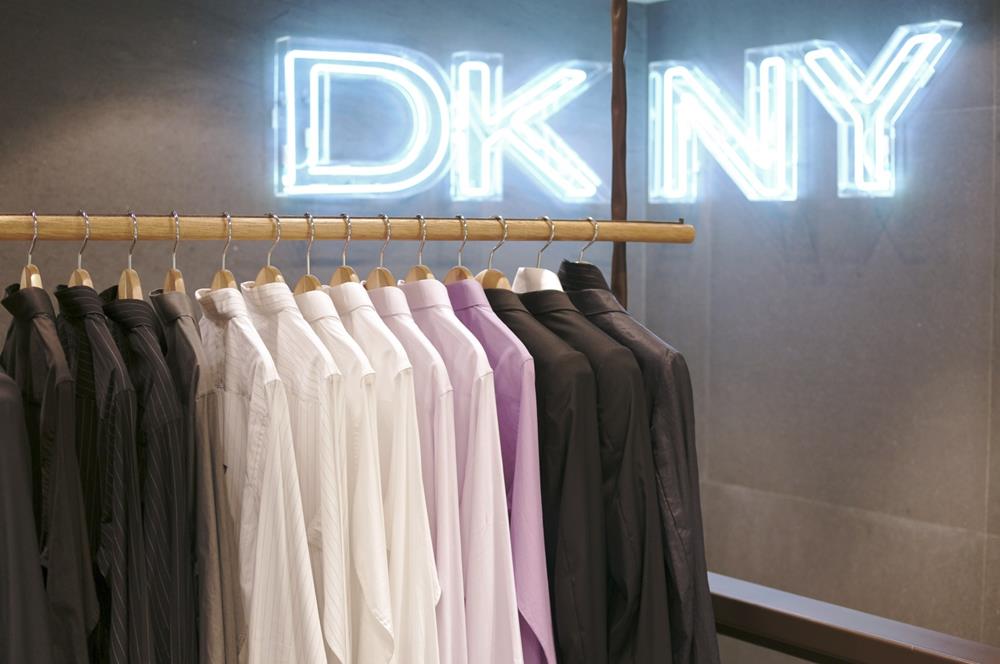New York City has long stood as a beacon for the fashion-forward, where creativity and innovation meet to shape the styles of tomorrow. In the 2010s, this metropolis didn’t just follow trends; it set them, thanks to a group of remarkable designers who infused their work with a mix of daring, passion, and a keen eye for the future. These talents redefined what fashion meant, not only on the city’s crowded streets but across the globe, turning every sidewalk into an unofficial runway and every collection into a new chapter of a story we couldn’t wait to wear. In this post, we’ll celebrate those designers who made the 2010s an unforgettable decade in New York City’s fashion history, examining how their visions came to life and left an indelible mark on the world of style.
The Rise of New York City as a Fashion Hub
New York City didn’t just stumble upon its fashion capital status; it earned it through decades of cultivating a unique blend of artistry, commerce, and cultural exchange. The city’s strategic location, diverse population, and vibrant arts scene provided the perfect conditions for fashion to thrive. This history set the stage for NYC’s dominance in the global fashion industry.
Key Fashion Events
- New York Fashion Week: An event that every designer dreams of headlining, NYFW transformed the city into the world’s runway, unveiling the latest trends to eager audiences.
- Trade Shows: Venues where designers, buyers, and the fashion-curious converge, these events are pivotal in setting the commercial tone for each season.
- Pop-up Shops and Collaborations: Innovative retail experiences that brought fashion directly to the people, making high-end designs more accessible.
Defining Popularity in Fashion
The fashion industry’s pulse beats through more than just sales numbers; it thrives on the buzz created by social media, the seal of celebrity approval, and the recognition from prestigious award panels. In the 2010s, a designer’s influence was measured by their ability to navigate this complex web of visibility and acclaim.
- Sales: A direct indicator of a brand’s appeal and consumer demand.
- Social Media Presence: From Instagram to Twitter, a solid online presence allowed designers to engage directly with their audience, making their brand more relatable and accessible.
- Celebrity Endorsements: The moment a star steps out in a designer’s creation, the world notices, giving the brand an invaluable boost.
- Critical Acclaim: Awards and positive reviews from fashion critics help cement a designer’s status in the industry.
Impact of Digital Media and E-commerce
The 2010s witnessed a digital revolution, fundamentally changing how fashion was consumed and sold. E-commerce sites and social media platforms became the new storefronts, allowing brands to reach global audiences with the click of a button. This digital expansion made fashion more democratic, giving rise to indie brands and transforming how trends were set and spread.
Most Popular Fashion Designers Based in NYC During the 2010s
New York City’s fashion scene in the 2010s was as dynamic and diverse as the city itself, with several designers standing out for their unique contributions and enduring influence. Let’s dive into the stories of these trendsetters who didn’t just follow the fashion currents—they created them.
Marc Jacobs
Marc Jacobs is synonymous with innovation, blending high fashion with street sensibilities in ways that captivated the world. Throughout the 2010s, his collections often served as a mirror to society, reflecting and sometimes challenging our notions of beauty and style.
- Key Collections: His 2010s collections were memorable for their mix of punk rock flair with meticulous craftsmanship, daring to juxtapose the exquisite with the everyday.
- Impact on Fashion Trends: Jacobs had the uncanny ability to forecast and influence global fashion trends, with his designs often sparking new conversations about what fashion could and should be.
Alexander Wang
Alexander Wang’s meteoric rise in the fashion industry is a testament to his talent for capturing the essence of modern urban chic. His designs resonate with a generation that values comfort, edginess, and simplicity.
- Signature Styles: Wang is renowned for his sporty aesthetic, seamlessly integrating athletic wear into everyday fashion with a minimalist and monochrome palette.
- Collaborations: His high-profile collaborations, including those with Adidas and H&M, broadened his appeal and cemented his status as a designer who knows what the younger generation wants.
Donna Karan (DKNY)
Donna Karan’s DKNY brand epitomized the spirit of New York City in the 2010s, offering designs that were both sophisticated and accessible, reflecting the city’s mix of pragmatism and glamour.
- Major Collections: Karan’s designs in the 2010s focused on versatility and wearability, embodying the fast-paced lifestyle of New Yorkers while maintaining a sleek, cosmopolitan aesthetic.
- Global Influence: DKNY became a global ambassador for New York’s energy and diversity, showcasing the city’s influence on the world stage through fashion.
Michael Kors
Michael Kors has long been a champion of luxury that’s both lavish and laid-back. His work in the 2010s perfectly captured the decade’s love for styles that straddle the line between luxury and casual comfort.
- Significant Milestones: The decade saw Kors’s brand go public and expand its global presence, bringing his vision of accessible luxury to a broader audience.
- Expansions: Kors’s expansion was not just in geography but also in the range of products, introducing more accessories and menswear lines.
Ralph Lauren
Ralph Lauren’s impact on fashion is unrivaled, with his brand representing the epitome of American style. In the 2010s, Lauren continued to evolve, blending tradition with innovation to remain relevant in a rapidly changing industry.
- Iconic Shows: Lauren’s fashion shows were legendary, often themed extravaganzas that offered more than just clothing—they provided an immersive experience into Lauren’s richly imagined worlds.
- Philanthropic Efforts: Beyond fashion, Lauren’s commitment to various causes, including cancer research and environmental sustainability, showcased his belief in the power of fashion to effect positive change in the world.
These designers didn’t just create clothes; they crafted narratives and visions of what fashion could be, firmly positioning New York City as an enduring epicenter of global fashion. Their legacies are a testament to the creativity, resilience, and vibrancy that define the city itself.
Emerging Talents
As the 2010s unfolded, New York City’s fashion scene witnessed the rise of fresh, groundbreaking talents. These emerging designers brought new energy, perspectives, and creativity to the runway, challenging conventions and setting the stage for the future of fashion.
Introduction to Notable Newcomers
In the latter half of the decade, a vibrant wave of newcomers started making headlines, each with their distinct voice and vision. They didn’t just follow in the footsteps of the greats; they carved out their own paths, redefining what fashion means in a rapidly changing world. Let’s meet some trailblazers who are reshaping the industry from the ground up.
Brief Profiles of Selected Emerging Designers
- Telfar Clemens: Known for his eponymous brand Telfar, Clemens became a symbol of inclusivity and unisex fashion. His signature bags, dubbed “Bushwick Birkins,” are a testament to his vision of luxury that is accessible to all.
- Kerby Jean-Raymond of Pyer Moss: Jean-Raymond’s work stands out for its powerful storytelling, blending social commentary with cutting-edge design. Pyer Moss collections often serve as platforms for highlighting African American culture and history, making fashion a vehicle for social change.
- Brandon Maxwell: Starting as Lady Gaga’s stylist, Maxwell launched his own brand that quickly became known for its sophisticated simplicity and focus on craftsmanship. His designs are a favorite among celebrities for their elegance and timeless appeal.
- Aurora James of Brother Vellies: James brought sustainability and ethical fashion to the forefront with her brand, Brother Vellies. She creates footwear that celebrates cultural heritage and traditional craftsmanship by working directly with artisans worldwide.
- Christopher John Rogers: Rogers burst onto the scene using bold colors, voluminous silhouettes, and an unapologetic embrace of glamour. His designs celebrate individuality, encouraging wearers to take up space and be seen.
These designers, among others, are not just making clothes; they’re weaving new narratives, challenging norms, and inviting us to imagine a more inclusive, thoughtful, and vibrant fashion future. Their contributions remind us that the heart of New York City’s fashion scene beats strongly with innovation, diversity, and an ever-evolving sense of what it means to be stylish.
Influence Beyond Fashion
The impact of New York City’s fashion designers extends far beyond the runway. These creative minds have used their platforms for much more than showcasing new collections; they’ve become influential figures in cultural movements and advocates for various social causes. Their work has changed not only the way we dress but also the way we think about the world around us.
Cultural Movements and Social Causes
Fashion has always been a mirror to society, reflecting and sometimes challenging our values and beliefs. The designers of the 2010s took this role seriously, using their visibility to spotlight issues close to their hearts.
- Advocacy for Equality: Many designers have been vocal supporters of LGBTQ+ rights, gender equality, and racial justice, incorporating these themes into their collections and shows.
- Environmental Awareness: Sustainability became a key focus, with designers adopting eco-friendly practices and materials to reduce the industry’s impact on the planet.
- Supporting Local Communities: By sourcing materials from and collaborating with local artisans, some designers have helped to revive traditional crafts and support economies.
Collaborations with Artists, Tech Companies, and Other Industries
The boundary between fashion and other creative industries has become increasingly blurred, leading to exciting collaborations that push the limits of what fashion can be.
- Art Meets Fashion: Designers have teamed up with artists to create wearable art, blending the visual and tactile in innovative ways that challenge our perceptions of clothing.
- Fashion and Technology: Partnerships with tech companies have led to the development of smart garments and accessories, merging functionality with fashion in the digital age.
- Cross-Industry Projects: Collaborations with industries as diverse as film, music, and sports have resulted in thematic collections that reflect broader cultural trends and interests.
These endeavors show how fashion designers are not just creators of clothes but also influencers, activists, and innovators. Their work in the 2010s paved the way for a more inclusive, conscious, and interconnected fashion industry, proving that style can make a statement, tell a story, and even drive change.
Conclusion
As we look back on the whirlwind of fashion that defined New York City in the 2010s, it’s clear that this was a decade of monumental change and creativity. From established designers’ groundbreaking collections to emerging talents’ fresh perspectives, NYC’s fashion scene thrived on innovation, inclusivity, and a bold willingness to challenge the status quo. These designers did more than dictate trends; they wove together narratives that reflected and influenced their time’s cultural and social fabric. They collaborated across industries, championed social causes, and redefined what fashion could mean in the modern world. As we turn the page to the next chapter, the legacy of the 2010s sets a vibrant precedent, reminding us that fashion is not just about clothes—it’s about community, identity, and the power of creativity to reshape the world around us.



